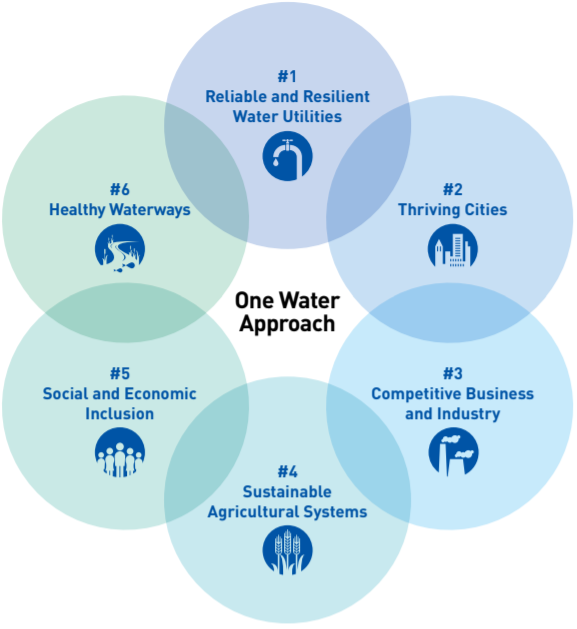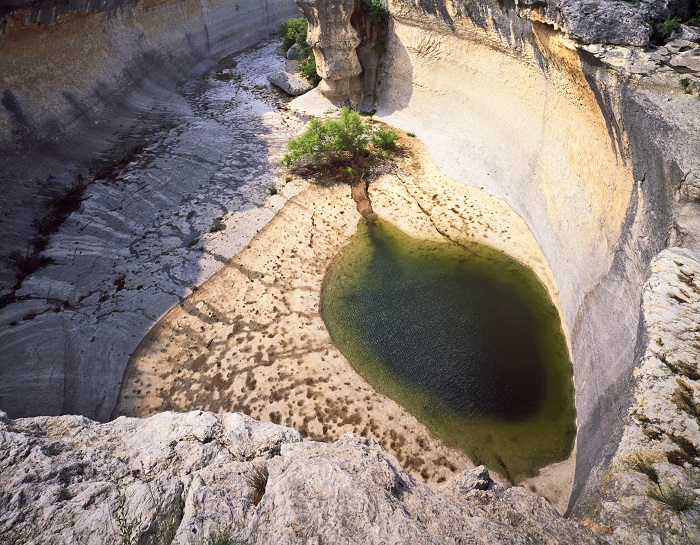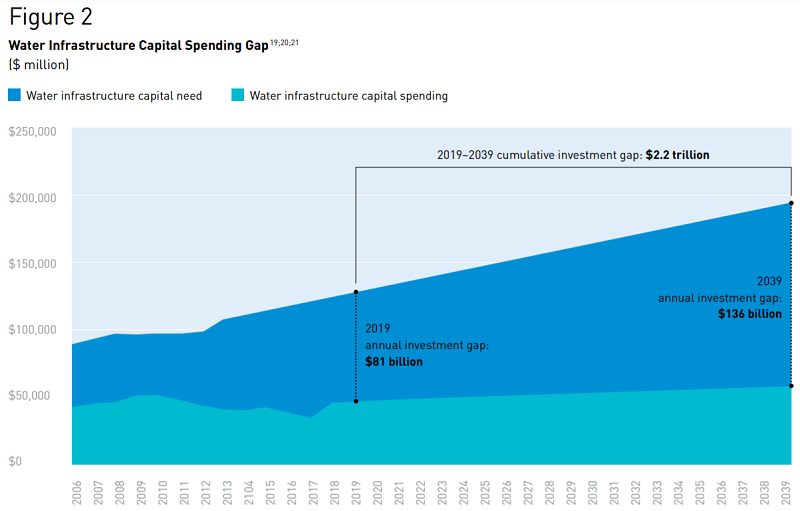Water water everywhere…
Water is not just integral to our lives and communities, it is also integrated.
This has always been the case, although the use and management of water has long been separated among different utility departments: Water Supply, Wastewater Treatment, Stormwater Management, Reclaimed Water, Environmental Water Quality.
But increasingly, communities are turning to a “One Water” approach, where water resource decisions are formed in a more holistic, integrated fashion that supports the entire watershed. It can mean addressing pollutants at the water source (rather than the treatment plant), using green infrastructure landscapes to capture and clean stormwater, or treating wastewater and using it to recharge aquifers. The project decisions take into account a community’s priorities, and often deliver multiple benefits.
The US Water Alliance has many of these examples in its “One Water Roadmap.” And according to the report, “There are many signs that water management in the U.S. is entering another great era of change and innovation. All around the country we are seeing silo-busting examples of integrated and inclusive approaches to water resource management. These approaches exemplify the view that all water has value and should be managed in a sustainable, inclusive, integrated way. We call this perspective One Water.”

The “One Water Approach” advocated by the US Water Alliance represents a holistic method to ensure a clean and sustainable water supply for the country. (Source: US Water Alliance)
IMS covers the planning and design of water resource projects for its architectural, engineering, and consulting clients. IMS provides the information in daily leads from RFPs/RFQs and through Advance Notices of upcoming projects. Some recent projects include:
* The City of Burlington, Vt., released an RFP in August 2020 for support services to develop and manage a Residential Stormwater Management Incentive and Education Program. The project fits into the City’s overall Integrated Water Quality Plan, a “tool that allows communities with numerous water quality obligations to examine all of these obligations as a whole, identify the community’s relative priorities for addressing human health and water quality improvements, and address these priorities by sequencing and scheduling work based on implementing the projects with the highest cost-benefit and community support first” (IMS 530088).
* In Texas, the Gulf Coast Water Authority issued an RFQ in July 2020 for a consultant to prepare an Integrated Water Resource Comprehensive Plan for potable, industrial, and raw water systems (IMS 518969-1).
* The Bay Laurel Center Community Development District in Florida released an RFQ in May 2020 for a comprehensive plan with improvements required to meet future potable water, wastewater, and reclaimed water demands (IMS 518035).
* The Madison Metropolitan Sewerage District in Wisconsin issued an RFP in May 2020 for group meeting strategy development services, meeting facilitation, asset mapping, report writing and overall project guidance for Shop One Catalytic Projects (IMS 518006).
* Houston, Texas released an RFI in early 2020 regarding a strategic master plan that may be an integrated water resources (One Water) effort that includes the City’s stormwater utility and provides opportunities for regional planning and collaboration on projects that deliver multiple benefits (IMS 500413).

Eagle Nest Creek, a tributary off the Rio Grande, is one of many waterways in Texas that can benefit from responsible water management. (Source: Texas Living Waters Project)
A recent webinar by the engineering firm Jacobs tells the stories of One Water plans in Calgary, Canada, and St. Petersburg, Florida. The premise: “If we think differently about water and view all water as a valuable resource, we can work to tackle the issues that impact people and move beyond traditional silos to bring an integrated, inclusive approach to a sustainable water future for all.”
Claude Tankersley of St. Petersburg and Leisha Pica of Jacobs Engineering described a situation where environmental changes and aging infrastructure were threatening water quality and service delivery.
“This combination of challenges facing our drinking water, our wastewater, stormwater, and recreational water caused us to pursue a One Water strategy for the future,” said Tankersley, the City’s Public Works Administrator.
Pica, Program Manager at Jacobs Engineering, said there is value to be gained from the One Water approach, which St. Petersburg applied to wastewater, reclaimed water, stormwater, potable water, and surface water quality.
“The One Water approach is a platform that considers multiple utility functions holistically,” Pica said. “The One Water approach went beyond ‘when should you replace outdated equipment.’ The City had an opportunity to consider all of its water needs concurrently. It’s the same ratepayer base paying for everything and funding those rate increases. So it’s very important for us to find value and synergy among these utility asset classes.”
There are many resources and examples to promote the One Water movement. The U.S. Water Alliance showcases outstanding projects and leadership in its Water Prize Awards. In-depth stories like Erica Gies’ report on the environmental benefits from One Water describe local successes while reminding us of big-picture challenges.
To visualize One Water, Venn diagrams are a good start. There is overlap to all our water uses and processes. But a better illustration was created for the “Blueprint for One Water” by Brown and Caldwell in partnership with the Water Research Foundation. Everything is connected: source water, water use, treatment, reuse, and augmentation/recharge.

Local, state, and federal governments must ramp up water infrastructure funding in order to properly invest in the future of America’s water supply. (Source: US Water Alliance)
Moving from illustration to cold hard numbers, the American Society of Civil Engineers and the Value of Water Campaign released a report in late August 2020 on the investments that are needed for water infrastructure. The report found a multi-billion-dollar underinvestment in water projects, while noting the “massive economic benefits people would realize from fully funding the nation’s water infrastructure needs.”
“In 2019, the total capital spending on water infrastructure at the local, state, and federal levels was approximately $48 billion, while investment needs totaled $129 billion, creating an $81 billion gap,” the report said.
These demands for water infrastructure can seem overwhelming. Although the One Water framework is not a miracle fix, it is a process where all water quality obligations are considered, all resources are valued, where community support drives priorities, and where smart planning can deliver projects with multiple benefits.

